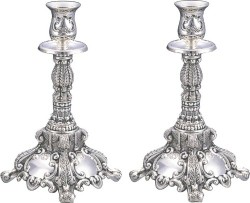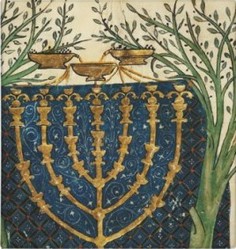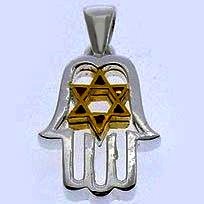Jewish religious observance revolves around the rhythmic cycles of time. The Hebrew calendar is based upon the moon cycles and most religious holidays focus on the changing of the seasons. The most central cycle in Jewish life is the cycle of the week: 6 days of work and 1 day of rest. The day of rest is called the Sabbath, or Shabbat, in Hebrew.
Honoring Shabbat eve forms a special time for families - the mother lights the Shabbat candles before sundown, the father says the blessing over the wine and the challah (special Shabbat and holiday bread) and the family eats a festive meal together. This meal is leisurely and often a great opportunity for the family to catch up on what everyone is doing and feeling. After the meal, the family may sing songs together and finally recite the blessing after the meal, much of it in song.
Some secular families try to maintain the tradition of Shabbat eve as important family time.
In the religious family, the men and boys go to synagogue Shabbat morning and at lunchtime the family gets together again for another meal. Because on Shabbat electricity or fire cannot be used, there is a special Shabbat lunch recipe, called Tshulent in Yiddish and Chamin in Hebrew. All the ingredients are put into a special pot and left in the oven on low heat from before the start of Shabbat until lunchtime.
After lunch, the family reads or plays games together and older children go out to play with their friends.
When there are three stars in the evening sky, it is the signal that Shabbat has ended. Then the family gathers once more for what is called the "Havdalah" ritual - a ritual that signals that Shabbat has ended. In the Havdalah ritual, a special candle is lit and everyone takes a whiff of aromatic spices. Then the candle is extinguished in the wine over which a blessing had been said.























 Customizable Matching Passover Invitations, Cards and Postageon 03/03/2013
Customizable Matching Passover Invitations, Cards and Postageon 03/03/2013
 Birthday or Mother's Day Gifts for Mom From Young Kidson 01/07/2013
Birthday or Mother's Day Gifts for Mom From Young Kidson 01/07/2013
 High-End Gifts for the Jewish Home or Wedding That You Can Order Onlineon 08/23/2012
High-End Gifts for the Jewish Home or Wedding That You Can Order Onlineon 08/23/2012
 Costumes for Plus Size Womenon 10/19/2012
Costumes for Plus Size Womenon 10/19/2012



Have You ever Had the Pleasure of Experiencing a True Jewish Shabbat?
WOW what beautiful items of Shabbat. No I have not experienced a true Jewish Shabbat. Thanks for sharing. :)K